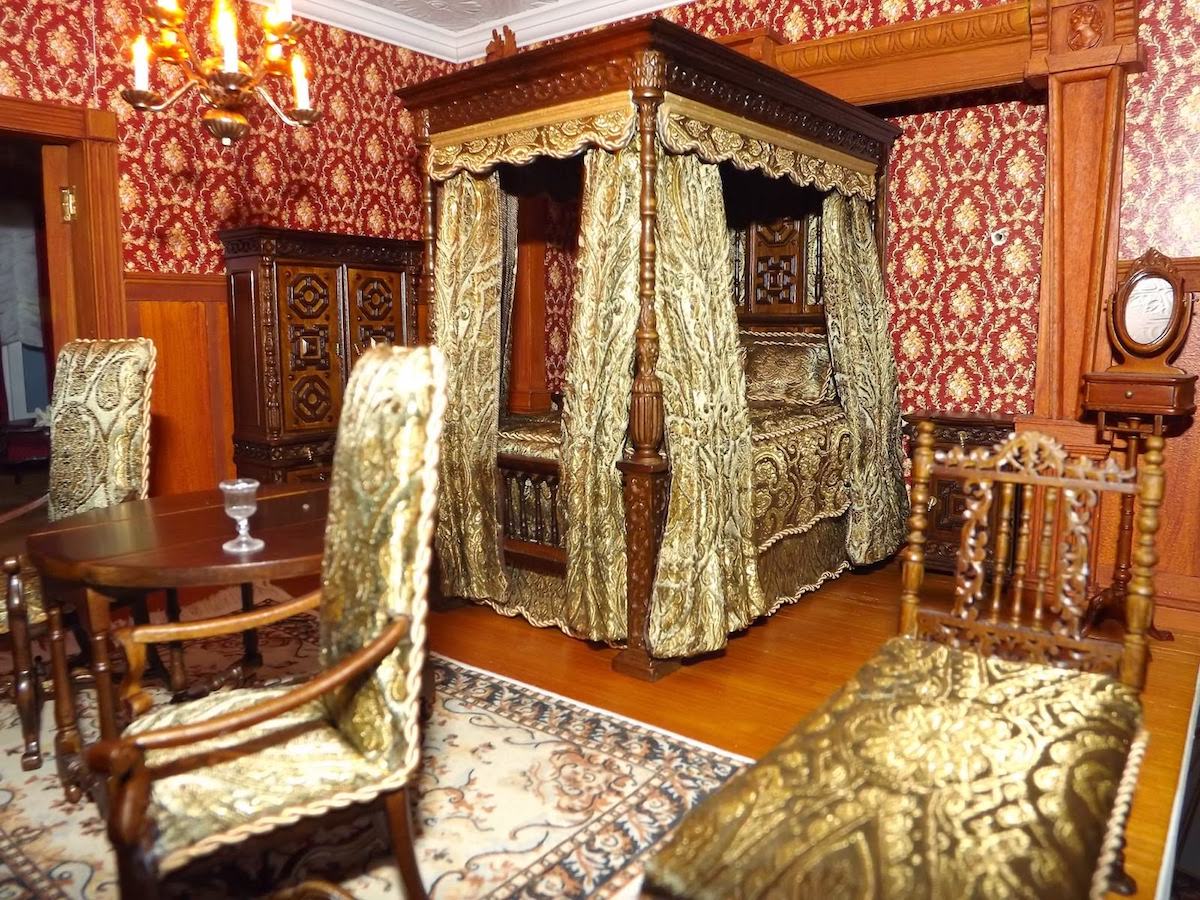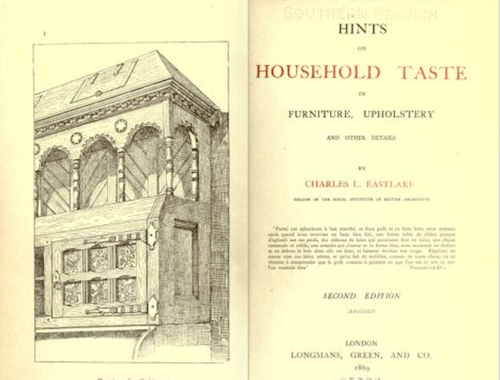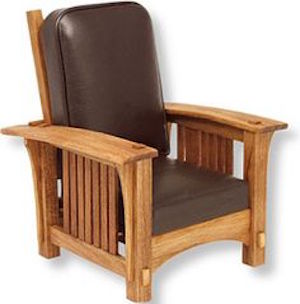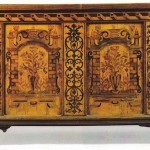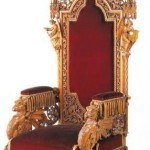Late Victorian to Art Nouveau Furniture
A revolution was about to take place. Artists and designers revolted against the machine age that replaced an individual’s talent. In furniture, the Arts/Aesthetics and Arts & Crafts movements would round out the Victorian era. And a book would be the focal point. But that would come later. The late Victorian era still produced lush decor, as found on the English Manor Dollhouse blog.
Mass Production
The Industrial Revolution saw the rise of mass production to satisfy the demand for stylish furniture by the growing middle class. New materials like papier mache for decorative and painted furniture, cast iron for outdoor furniture and hollow metal tubings for rocking chairs, delicate twisted-wire furniture for chairs and small tables were used.
Natural materials like roots & branches of the trees, horns, and antlers were used for rustic furniture; wicker, bamboo and rattan were used for verandah and Garden furniture. Bentwood furniture made by Thonet factories in Europe was enormously popular in the United States. Mechanical or ‘patent’ furniture, with some sort of mechanical system for its efficient use, became the rage.
The Revolution Begins
Eastlake Style, 1870-1890
This design style is named for Charles Locke Eastlake, who wrote a popular book in 1872 called Hints on Household Taste. It was originally published in London. One of his principles was the relationship between function, form, and craftsmanship. Shapes of furniture from this style tend to be more rectangular. Ornamentation was created through the use of brackets, grooves, chamfers and geometric designs. American furniture manufacturers were enthusiastic about this style since it was so easy to adapt to mass production. Woods used were dark, but more native woods, such as oak, maple, and pine, were incorporated. Legs and chair backs are straighter, often with incised decoration.
Art or Aesthetic Furniture, 1880-1914
This period represents furniture designs gone mad, almost an “anything goes” school of thought prevailed. The style embraced both the straight and angular, with some pieces that are much more fluid, reflecting several earlier design periods. This era saw the wide usage of turned moldings and dark woods, but this time stained to imitate ebony and lacquer. The growing Oriental influence is seen in furniture from this period, including the use of bamboo, which was imported and included in the designs. Legs tend to be straight; feet small.
Arts & Crafts, 1895-1915
William Morris and John Ruskin inspired the Arts & Crafts Movement with their reaction against the machine age and its effect on ordinary working people. They favored ‘honesty’ of construction and continuity with medieval traditions, where a value was placed on hand-crafted work with one individual responsible for all stages of production.
Victorian Arts & Crafts style furniture in England was handmade in a country or farmhouse style and often looked nicer than it was to sit on in the case of chairs. Morris and co. also produced simply made cabinets and sideboards on which Morris painted scenes of medieval fantasy. The designers of the Arts and Crafts style wanted to show the superiority of handmade furniture, and they made pieces that were affordable for most classes.
The wood used for Arts & Crafts furniture is primarily oak. Finishes were natural, fumed or painted. Hardware was often made of copper. Legs are straight, and feet are small, if present at all, as they were often a simple extension of the leg. Some inlay of natural materials was used, such as silver, copper and abalone shells.
The term “Arts & Crafts” was coined in 1888 and the movement saw the peak of its influence from 1890 to 1910.
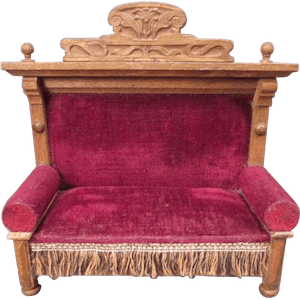
Art Nouveau settee found on RubyLane
Art Nouveau, 1896-1914
The Paris Exposition of 1900 introduced furniture styles reflecting what was happening in the rest of the design world, such as jewelry and silver. Art Nouveau style emerged from the Arts & Crafts movement in stylistic respects. Most were produced in factories by conventional manufacturing techniques. It tended to be expensive, as an elegant finish, usually polished or varnished, was regarded as essential, and continental designs were generally very complex, with curving shapes that were expensive to make. Legs tend to be sweeping or cabriole. Upholstery became slimmer.
You may be interested in my Early Victorian Furniture and Mid-Victorian Furniture articles.
Susan Downing, with Patrick Owens


